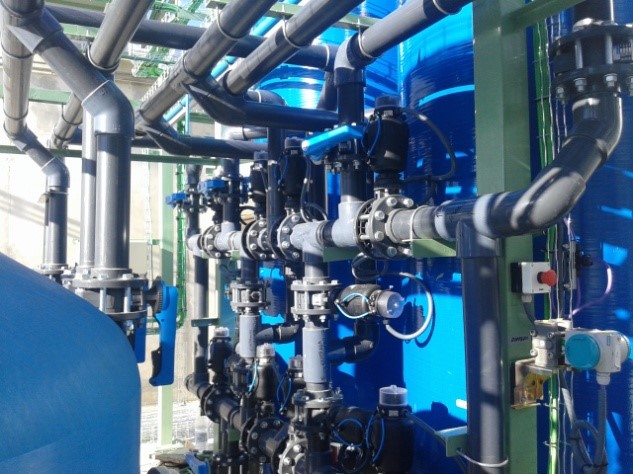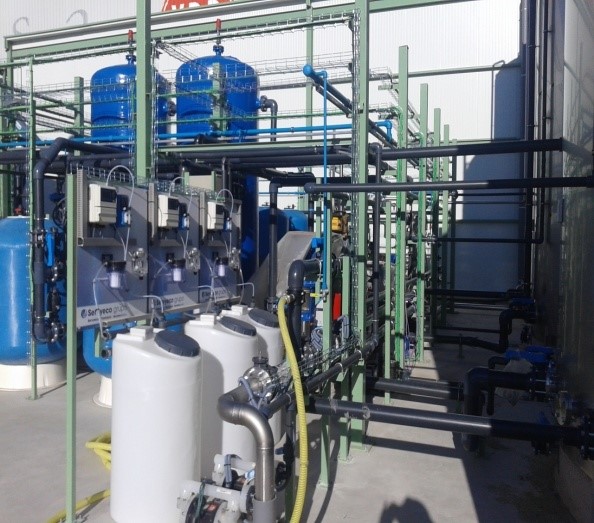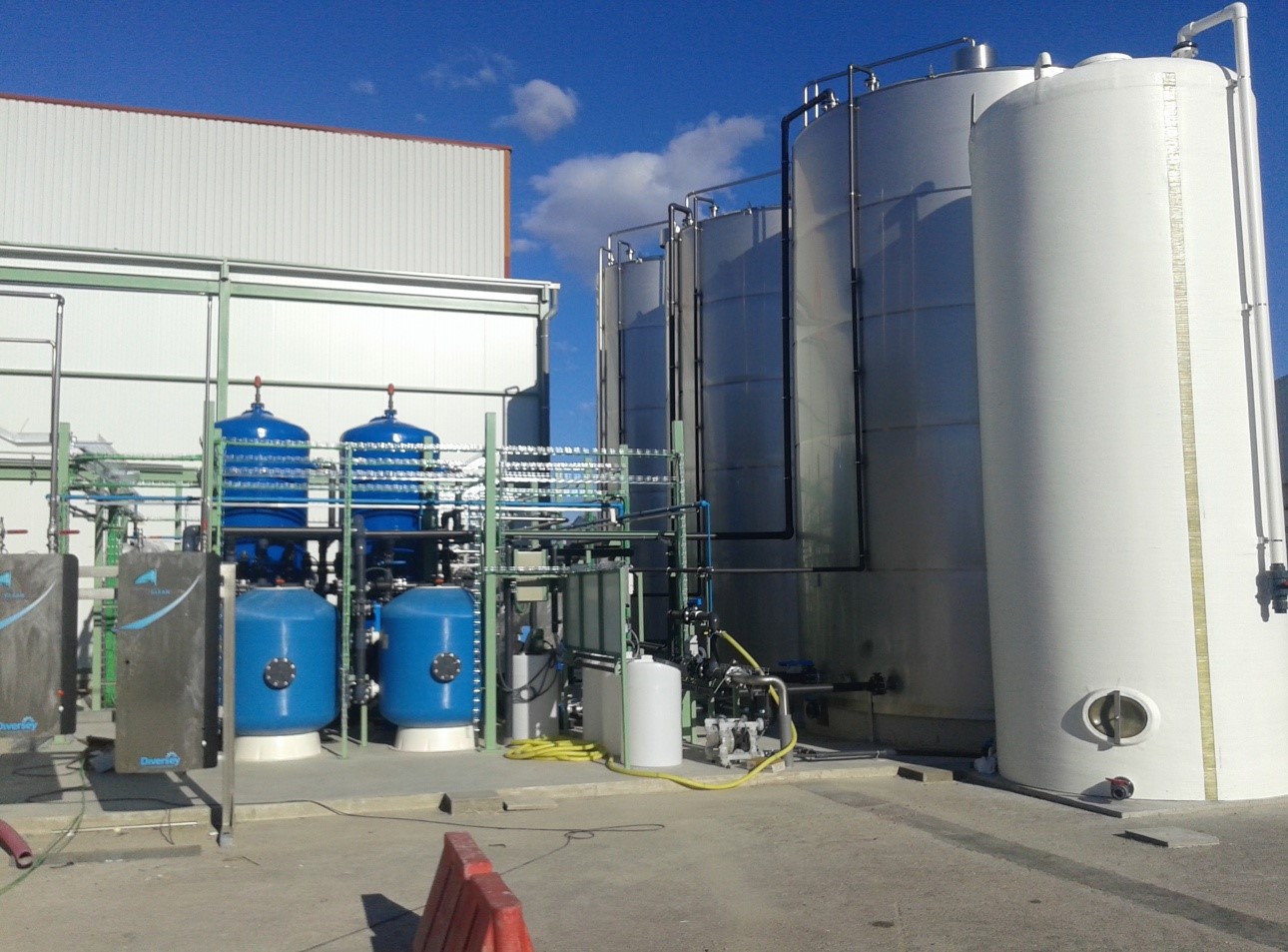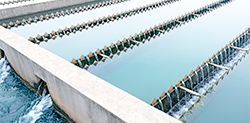Acerca de Servyeco | Engineering and Equipment
Engineering and Equipment | Treatment by ion exchange resins
Treatment flow: 0,5 m3/h – 100 m3/h
Ion exchange is an exchange of ions between two electrolytes or between a solution of electrolytes and a complex. In most cases the term is used to refer to processes of purification, separation, and decontamination solutions containing such ions, employing polymeric or mineral solids in devices called ion exchangers.
Ion exchangers typically contain ion exchange resins (porous or gel form), zeolites, montmorillonite, clay and soil humus. Ion exchangers can be cation exchangers exchanging positive charges ions (cations), or anion exchangers that exchange negative charges ions (anions). Also amphoteric exchangers capable of exchanging cations and anions at the same time. However, the simultaneous exchange of cations and anions can be more efficient if done in mixed devices containing a mixture of anion and cation exchange resin, or passing the treated solution through different ion exchange materials.
Ion exchangers can be selective or preferably work with certain ions or types, depending on their chemical structure. This may depend on the size of the ions, its charge or its chemical structure. Typical examples of ions which can be bound to the ion exchangers are:
- H+ ions (protons) and OH- (hydroxide)
- Monatomic ions electrically charged 1+, as Na+, K+, or Cl-
- Monatomic ions electrically charged 2+, as Ca2+ or Mg2+
- Inorganic polyatomic ions as SO42- y PO43-
- Organic bases, usually molecules containing the amino functional group-NR2H+
- Organic acids, usually containing molecules functional group COO- (carboxylic acid)
- Other biomolecules that can be ionized: amino acids, peptides, proteins
Ion exchange is a reversible process and the ion exchanger can be regenerated or reload with ions by washing with an excess of these ions.












